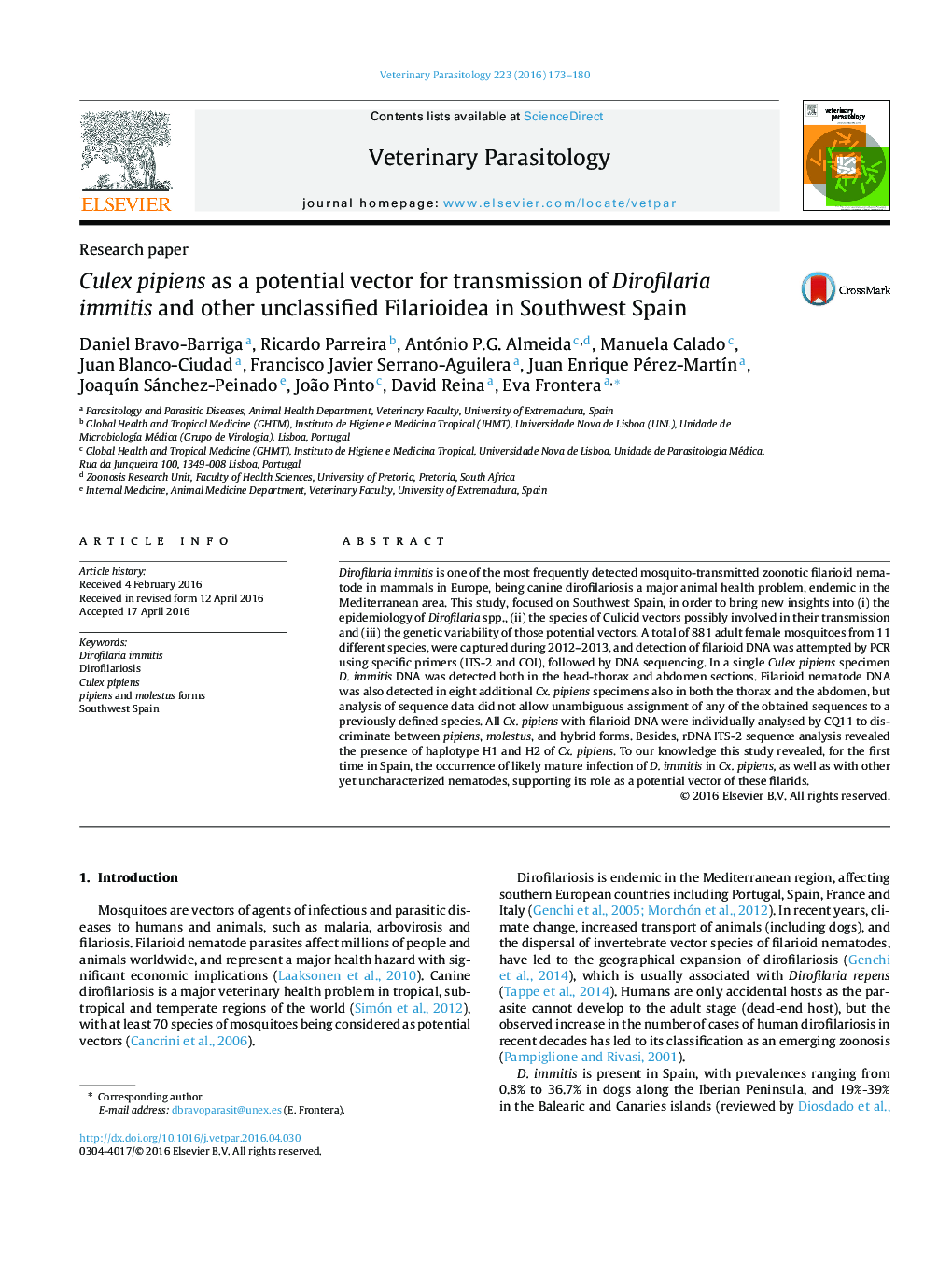| کد مقاله | کد نشریه | سال انتشار | مقاله انگلیسی | نسخه تمام متن |
|---|---|---|---|---|
| 2469793 | 1555653 | 2016 | 8 صفحه PDF | دانلود رایگان |

• Dirofilaria immitis DNA detected in thorax of Culex pipiens f. pipiens.
• Culex pipiens f. pipiens as a potential vector of Dirofilaria immitis in Spain.
• Detection of unclassified Filarioidea, possibly of avian origin in Spanish mosquitoes.
• Culex pipiens biotypes can acts as a potential vector for other filarioid nematodes.
Dirofilaria immitis is one of the most frequently detected mosquito-transmitted zoonotic filarioid nematode in mammals in Europe, being canine dirofilariosis a major animal health problem, endemic in the Mediterranean area. This study, focused on Southwest Spain, in order to bring new insights into (i) the epidemiology of Dirofilaria spp., (ii) the species of Culicid vectors possibly involved in their transmission and (iii) the genetic variability of those potential vectors. A total of 881 adult female mosquitoes from 11 different species, were captured during 2012–2013, and detection of filarioid DNA was attempted by PCR using specific primers (ITS-2 and COI), followed by DNA sequencing. In a single Culex pipiens specimen D. immitis DNA was detected both in the head-thorax and abdomen sections. Filarioid nematode DNA was also detected in eight additional Cx. pipiens specimens also in both the thorax and the abdomen, but analysis of sequence data did not allow unambiguous assignment of any of the obtained sequences to a previously defined species. All Cx. pipiens with filarioid DNA were individually analysed by CQ11 to discriminate between pipiens, molestus, and hybrid forms. Besides, rDNA ITS-2 sequence analysis revealed the presence of haplotype H1 and H2 of Cx. pipiens. To our knowledge this study revealed, for the first time in Spain, the occurrence of likely mature infection of D. immitis in Cx. pipiens, as well as with other yet uncharacterized nematodes, supporting its role as a potential vector of these filarids.
Figure optionsDownload as PowerPoint slide
Journal: Veterinary Parasitology - Volume 223, 15 June 2016, Pages 173–180